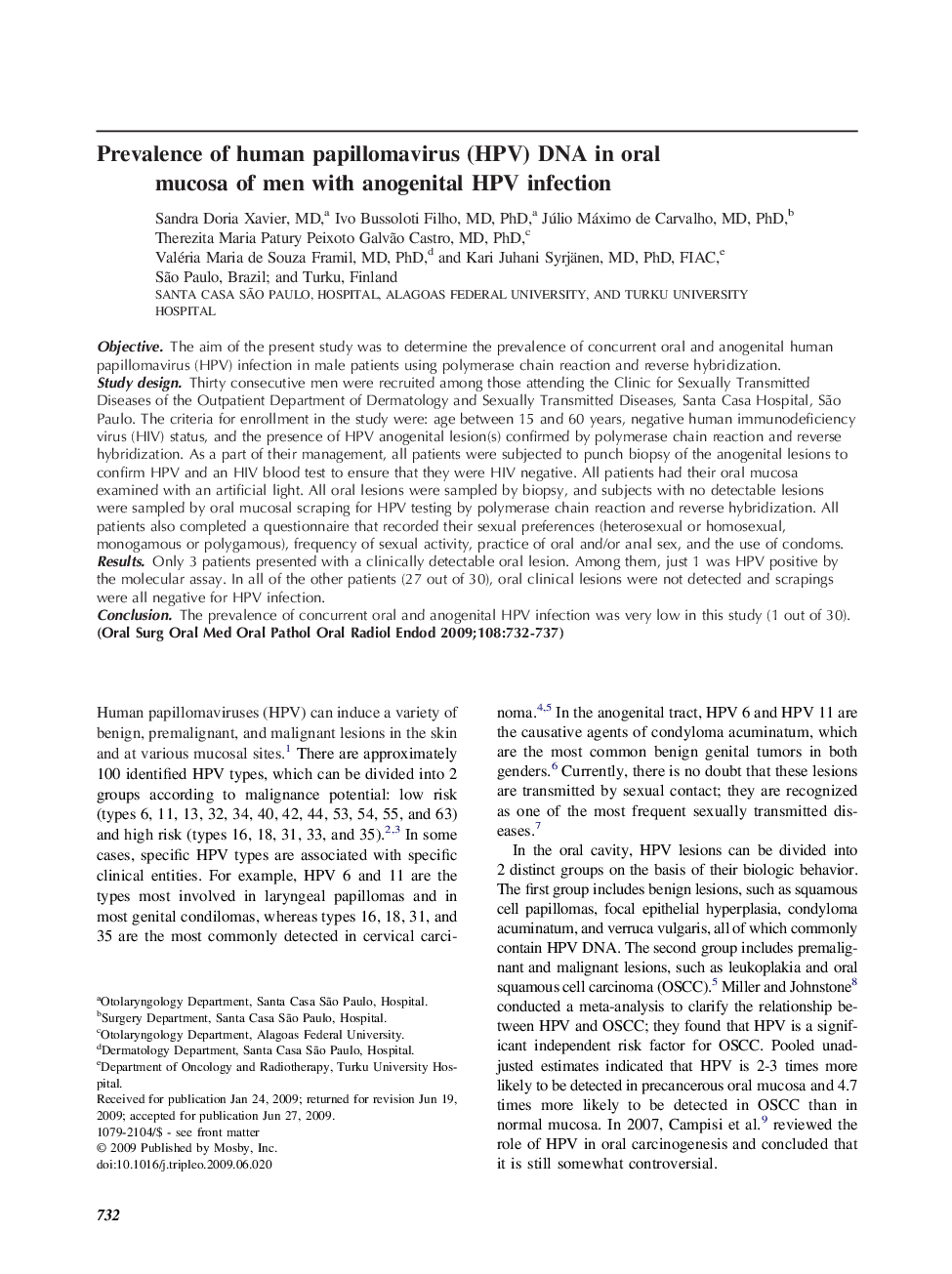| Article ID | Journal | Published Year | Pages | File Type |
|---|---|---|---|---|
| 3168084 | Oral Surgery, Oral Medicine, Oral Pathology, Oral Radiology, and Endodontology | 2009 | 6 Pages |
ObjectiveThe aim of the present study was to determine the prevalence of concurrent oral and anogenital human papillomavirus (HPV) infection in male patients using polymerase chain reaction and reverse hybridization.Study designThirty consecutive men were recruited among those attending the Clinic for Sexually Transmitted Diseases of the Outpatient Department of Dermatology and Sexually Transmitted Diseases, Santa Casa Hospital, São Paulo. The criteria for enrollment in the study were: age between 15 and 60 years, negative human immunodeficiency virus (HIV) status, and the presence of HPV anogenital lesion(s) confirmed by polymerase chain reaction and reverse hybridization. As a part of their management, all patients were subjected to punch biopsy of the anogenital lesions to confirm HPV and an HIV blood test to ensure that they were HIV negative. All patients had their oral mucosa examined with an artificial light. All oral lesions were sampled by biopsy, and subjects with no detectable lesions were sampled by oral mucosal scraping for HPV testing by polymerase chain reaction and reverse hybridization. All patients also completed a questionnaire that recorded their sexual preferences (heterosexual or homosexual, monogamous or polygamous), frequency of sexual activity, practice of oral and/or anal sex, and the use of condoms.ResultsOnly 3 patients presented with a clinically detectable oral lesion. Among them, just 1 was HPV positive by the molecular assay. In all of the other patients (27 out of 30), oral clinical lesions were not detected and scrapings were all negative for HPV infection.ConclusionThe prevalence of concurrent oral and anogenital HPV infection was very low in this study (1 out of 30).
